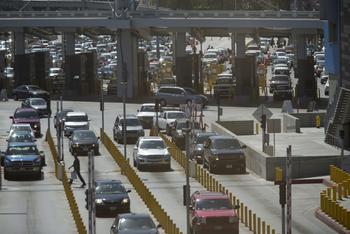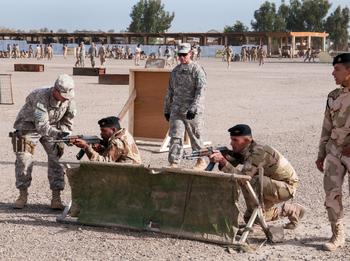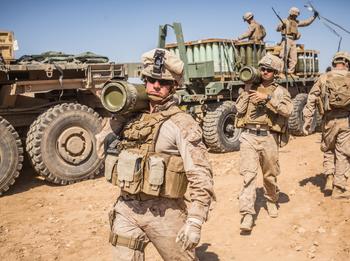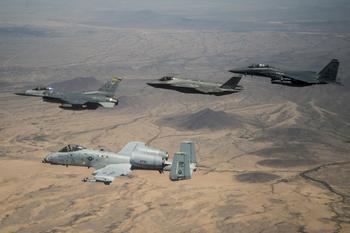RAND Federally Funded Research and Development Centers (FFRDCs)
Federally funded research and development centers (FFRDCs) are independent entities that assist the U.S. government.
FFRDCs act as strategic partners to their sponsors by offering many services:
- addressing long-term problems that are important and complex
- providing immediate assistance on urgent issues
- conducting objective technical analysis
- developing creative, cost-effective solutions.
RAND, an independent, nonprofit institution, operates three FFRDCs sponsored by the Department of Defense and one sponsored by the Department of Homeland Security.
Homeland Security Operational Analysis Center (HSOAC)

Drivers wait to cross into the United States from Mexico at the border in San Ysidro, California, August 18, 2015
Photo by Mike Blake/Reuters
SPONSOR: U.S. Department of Homeland Security
The Department of Homeland Security faces complex challenges in preventing terrorism, managing U.S. borders, enforcing and administering immigration laws, safeguarding cyberspace, and strengthening national preparedness and resilience. To help address these challenges, RAND operates the Homeland Security Operational Analysis Center. HSOAC analyses focus on
- acquisition studies
- R&D studies
- innovation and technology acceleration
- organizational studies
- operational analysis
- regulatory, doctrine, and policy studies
- homeland security threat and opportunity studies
- workforce analysis
- recruiting and retention
- training, education, and leadership development
- programming and budgetary analysis
- diversity and inclusion
- workforce health and safety
- disaster cost analyses
- economics of disasters
- data-mining and machine learning for disasters
- policy and schedule analyses.
RAND Arroyo Center

U.S. soldiers assist Iraqi army trainees during movement technique training at Camp Taji, Iraq, January 7, 2015
Photo by MSgt. Mike Lavigne/U.S. Army
SPONSOR: Army Staff/Director, Program Analysis and Evaluation
Founded in 1982, the RAND Arroyo Center is the U.S. Army's sole FFRDC for studies and analysis. At RAND, the center is housed within RAND's Army Research Division. Research areas include
- threat assessment
- strategy and doctrine
- force design and operations
- training and readiness
- support infrastructure (at the national and operational levels)
- recruiting, retention, and personnel management
- management of technology and weapons development.
RAND National Defense Research Institute (NDRI)

U.S. Marines carry 155mm rounds to an M777 Howitzer gun line to prepare for fire missions in Syria, March 21, 2017
Photo by Lance Cpl. Zachery Laning/U.S. Marine Corps
SPONSOR: Office of the Secretary of Defense
NDRI conducts research and analysis for the Office of the Secretary of Defense, the Joint Staff, the Unified Combatant Commands, the defense agencies, the U.S. Marine Corps, and the U.S. Navy. Research areas include
- international security and economic policy
- threat and risk assessment
- defense strategy and force employment options
- applied science and technology
- intelligence sources and methods
- strategic decision processes
- information processing systems
- systems acquisition
- readiness and support systems
- active-duty and reserve manpower, personnel, and training.
RAND Project AIR FORCE (PAF)

A commander leads a formation with the A-10 Thunderbolt II, F-35 Joint Strike Fighter, and F-15 Strike Eagle, near Luke Air Force Base, Arizona, June 2, 2017
Photo by Tech. Sgt. Larry E. Reid Jr./U.S. Air Force
SPONSOR: Under Secretary of the Air Force
Since its founding in 1946, PAF has remained the only Air Force FFRDC focused on studies and analyses, rather than systems engineering or scientific laboratories. PAF analyzes cross-cutting policy and management issues, including
- preferred means of developing and employing aerospace power
- national security threats and strategies
- Air Force missions, capabilities, and organizations
- strategic and tactical force operations
- technology, support, and resource management.
FFRDCs are administered in accordance with U.S. Code of Federal Regulations, Title 48, Part 35, Section 35.017. More information about FFRDCs can be found at: gpo.gov.